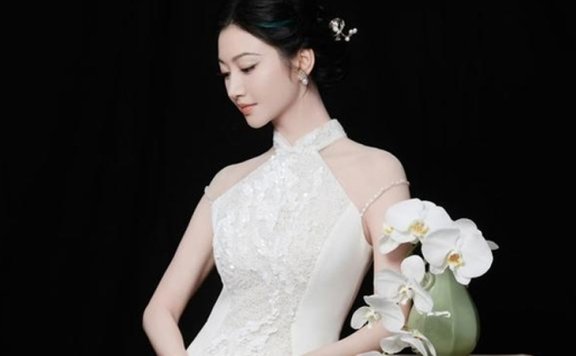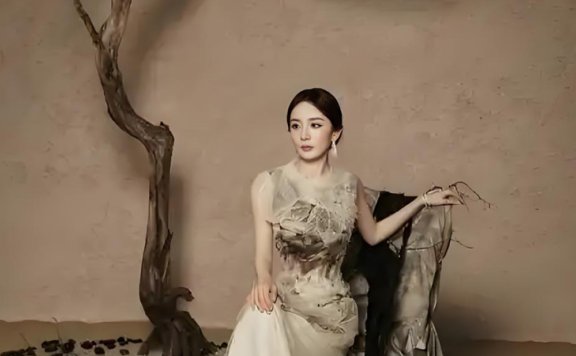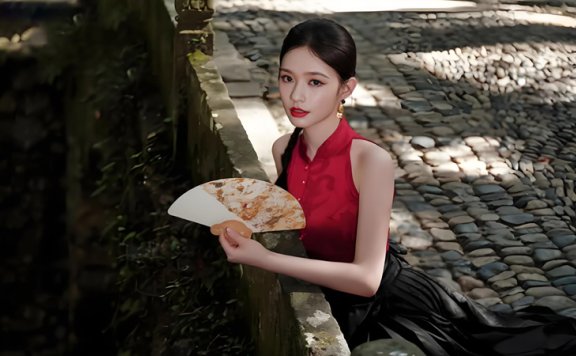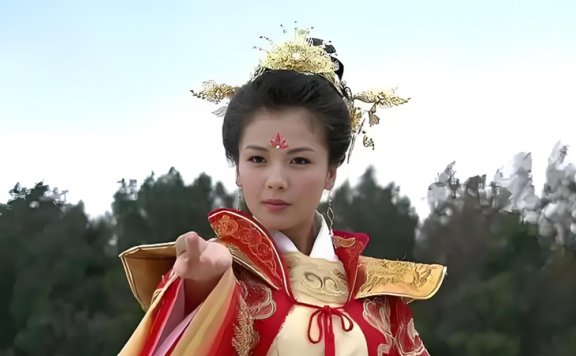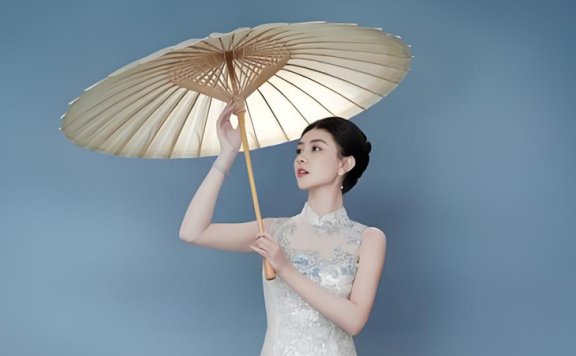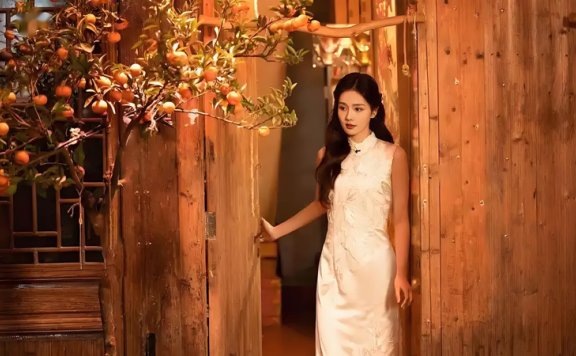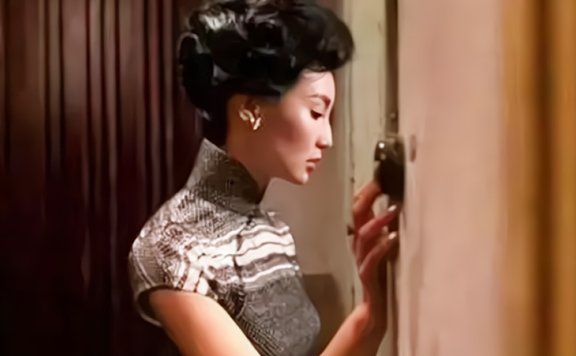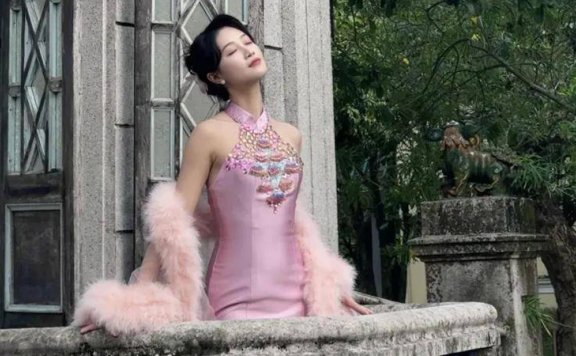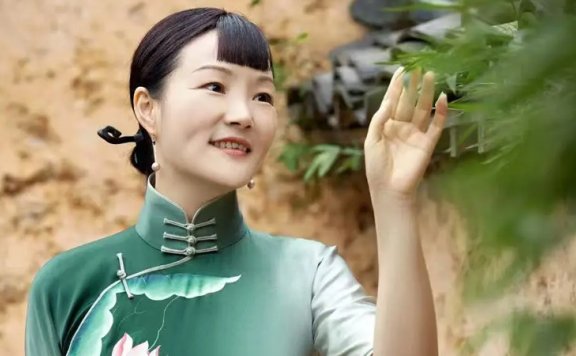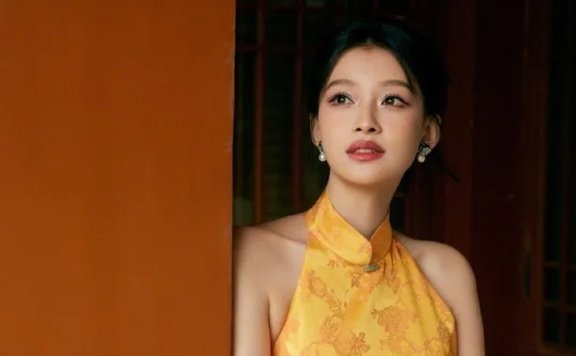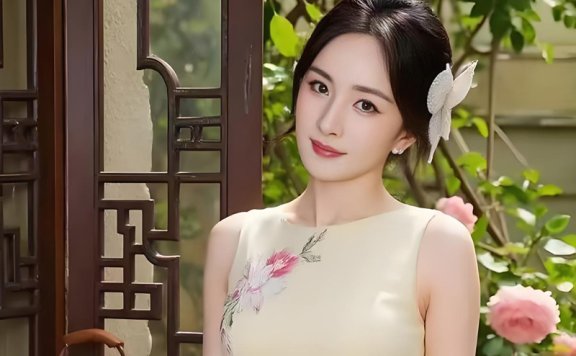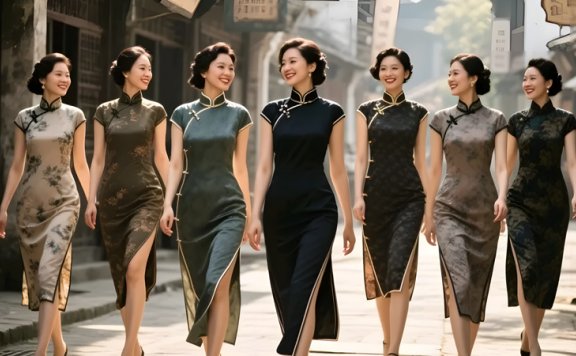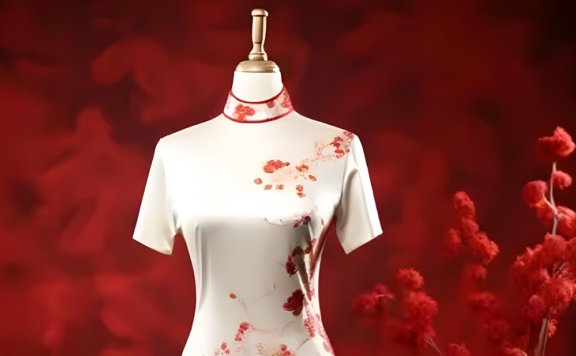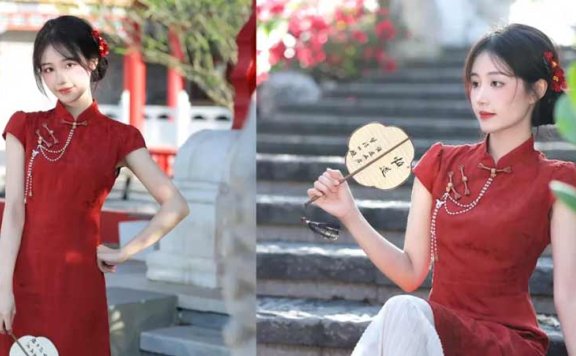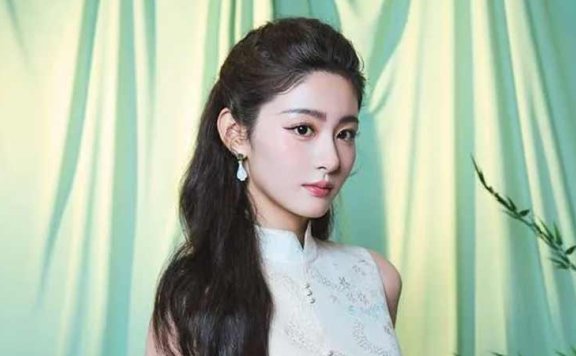Article
搜索结果:
-
Why Is Gulnazar's Qipao Reviving 1920s Shanghai Glamour?
When Gulnazar appeared in a champagne-colored Qipao, social media buzzed with admiration. Her recent photoshoot channels the elegance of Republican-era China, blending vintage aesthetics with modern sensibilities. The ensemble features delicate embroidery and a high slit, creating a silhouette that is both timeless and contemporary. This look has sparked conversations about fashion nostalgia and how historical styles influence today's trends. It is not merely about clothing but about storytelling through fabric and design. In an age of fast fashion, such attention to detail stands out. This moment captures a wider movement where traditional attire finds new life. The response shows how visual elements can evoke emotion and connect generations. Through this outfit, she invites viewers to explore a rich historical tapestry. Fashion Details The Qipao worn by Gulnazar showcases intricate craftsmanship. Made from silk, it includes bird and flower motifs stitched with precision. The high slit design allows for movement while emphasizing grace. This choice reflects a balance between modesty and boldness. Designers often use such elements to highlight natural body lines. The color palette remains subtle, enhancing the wearer's presence without overpowering. Accessories like a handheld fan and classic updos complete the vision. Each piece works in harmony to… -
Jing Tian's White Qipao at Mid-Autumn
How Did Jing Tian's White Qipao Redefine Modern Elegance This Mid-Autumn? In the soft glow of the Mid-Autumn Festival, Jing Tian (景甜), a celebrated Chinese actress, stepped into the spotlight wearing a breathtaking white sheer backless Qipao. This choice immediately captured public attention, blending traditional aesthetics with contemporary design in a way that felt both fresh and deeply rooted. Her appearance wasn't just about fashion; it sparked a broader conversation on how women today navigate age, identity, and style. By opting for a garment that emphasized grace over overt exposure, she challenged typical celebrity norms and invited everyone to rethink what it means to be beautifully confident. This moment served as a cultural touchstone, illustrating how personal style can influence societal perceptions and bridge generational divides. Fashion Evolution Jing Tian's shift to a delicate Qipao represents a notable departure from her earlier roles that often highlighted strength and intensity. This new direction showcases a more refined and approachable side of her persona. The gown's design, with its subtle sheer layers and intricate embroidery, demonstrates how fashion can communicate sophistication without relying on bold statements. It's a conscious move towards expressing maturity and self-assurance, resonating with audiences who appreciate nuance in… -
Yang Mi’s Ink Wash Qipao and Withered Trees
At first glance, Yang Mi’s latest photoshoot felt like a high-end couture campaign—until you zoomed in on the details. The Qipao she wore, with its ink wash patterns, evoked the exact moment when ink bleeds into rice paper during calligraphy practice: a flow of slate gray on plain white fabric, not a forced vibrant pop but a cool, understated elegance. The frog buttons dangled with tiny tassels, and the slit ran up to her thigh, adding a hint of sexiness that was never crass—just that “everyone gets it but no one can put it into words” kind of sophistication. But what truly set the scene apart was the backdrop: withered trees, bare and lifeless, yet somehow amplifying her presence instead of overshadowing it. Ink Wash Qipao The Qipao’s design is a masterclass in subtlety. The ink wash effect isn’t a bold, manufactured color; it’s a quiet spread, like the way ink seeps into paper when you’re learning to write with a brush pen as a kid. Slate gray on ivory fabric, it carries a “cold” tone—not unwelcoming, but distant enough to feel exclusive. The frog buttons, adorned with delicate tassels, and the high thigh slit balance elegance with allure: every… -
Dilraba: A Qipao Meets Knee-High Boots
When traditional elegance meets modern edge, a unique fashion statement is born. Chinese actress Dilraba's latest photoshoot masterfully demonstrates this fusion, creating a visual dialogue between the classic Qipao and contemporary, bold footwear. Her styling choices transcend mere trend-following, instead offering a narrative on how heritage and innovation can coexist in a single, powerful image. This is not just a photoshoot; it is a testament to the evolving language of global fashion, where boundaries are blurred and new definitions of beauty are constantly being written. Garment as Canvas The centerpiece of this sartorial story is a lace Qipao. Its light brown base provides a soft, elegant canvas, while intricate black lacework sprawls across the shoulders and sides like delicate ivy. This design choice is deliberate, preserving the dress's inherent classical grace while injecting a layer of modern mystique and allure. The garment hugs the figure, celebrating the timeless silhouette that has made the Qipao an enduring icon, yet the lace detailing ensures it feels entirely of-the-moment, a piece designed for a contemporary muse who respects but is not bound by the past. Dilraba’s interaction with the dress is equally thoughtful. In one frame, she lounges lazily on a wooden chair,… -
Song Yi: Has China's Qipao Queen Outgrown Her Legendary Role?
When Song Yi (宋轶) stepped out for the promotional event of Shadow Love (与晋长安) on August 29, 2025, fans barely recognized her. Gone was the softness associated with her iconic Qipao image; instead, stark contouring created harsh shadows under strong lights, sparking instant online debate about drastic changes to her appearance. The actress swiftly clarified it was merely a new makeup artist's approach, not cosmetic surgery, echoing her 2022 live-streamed eyelid demonstration. This incident highlights the intense scrutiny Song faces as she navigates a pivotal career shift—moving beyond the "First Qipao Beauty" persona cemented by her unforgettable role as Yu Manli (于曼丽) in the 2015 series The Pretender (伪装者). Now, at 36, her attempt to portray General Li Shuang (黎霜) in Shadow Love confronts both audience expectations and industry pressures. Silk to Steel Song Yi's journey began far from the battlefield. Her breakout role came as Yu Manli in The Pretender. At 26, weighing 98 pounds with a 22-inch waist, she embodied a lethal grace in traditional yin dan shi lin (阴丹士林) blue Qipao dresses. The slit skirt swayed subtly with her walk, masterfully blending a Jiangnan gentlewoman's elegance with a secret agent's sharpness. She made Yu Manli heartbreakingly fragile… -
How Actress Lin Yun is Redefining the Qipao on Her Own Terms
In 2024, the Qipao, a century-old symbol of grace, is trending again—but not worn by seasoned icons or rising pop stars. Instead, it’s Lin Yun (林允), the actress many assumed had faded from the spotlight, who’s redefining this classic. Her take isn’t about nostalgic imitation or ethereal beauty; it’s raw, grounded, and fiercely personal. While others chase trends, Lin’s modern Qipao whispers rebellion: a refusal to conform to industry molds. This unexpected revival isn’t just fashion—it’s a manifesto for realness in an era of curated perfection. Stardom to Stillness Lin exploded onto screens at 18 as the lead in The Mermaid (美人鱼, 2016), hailed as Stephen Chow’s muse. Overnight fame brought adoration and skepticism: critics targeted her acting; fans debated her "luck." While peers chased constant visibility—flooding variety shows and social media—Lin retreated. She vanished from headlines, ignored gossip mills, and rarely posted. Detractors called it career suicide. On her private account, she shrugged: "When filming, I obsess. When not, I stay home. No performative hustle needed." Her stillness wasn’t surrender—it was strategy. That patience reshaped her path. Unlike peers who burned out chasing relevance, Lin worked quietly. She auditioned relentlessly, endured harsh rejections, and drilled lines before mirrors after… -
Liu Tao's Qipao Stroll Through Guzhen
On a tranquil evening in an ancient town, under the soft glow of lanterns, Liu Tao (刘涛) emerges in a traditional Qipao, her presence transforming the scene into a timeless tableau of grace and resilience. This moment in Guzhen (古镇) isn't just about beauty—it's a window into her journey as an actress who defies fleeting trends with unwavering authenticity. Her story, rooted in hard work and quiet strength, resonates far beyond the screen, offering a powerful narrative of perseverance in the face of life's challenges. As we delve into her world, we uncover how this night symbolizes her essence: a blend of elegance and grit that captivates without clamor. Guzhen Night Picture this: the ancient town of Guzhen bathed in dim, golden light, with the gentle murmur of a nearby river setting a serene backdrop. Liu Tao appears, clad in a flowing Qipao, her steps light and deliberate, as if stepping out of a classic painting. The atmosphere shifts instantly to one of hushed reverence, where onlookers pause, drawn not by spectacle but by an ethereal charm that feels both distant and intimate. Her movements—subtle gestures like a turn of the head or a soft smile—carry an effortless poise, evoking… -
How Liang Jie's Qipao Stole the Spotlight at 2025 Gala
As the camera flashes erupted on the red carpet, one vision halted every lens: Liang Jie (梁洁), bathed in an ethereal silver glow. Her appearance wasn't just beautiful; it was a masterclass in modern elegance, instantly becoming the defining fashion moment of the evening. Stepping beyond the expected gowns, her choice spoke volumes – a gleaming Qipao that seemed sculpted onto her frame, announcing a confident blend of heritage and contemporary star power. This wasn't merely an outfit; it was a statement piece, radiating sophistication and capturing the essence of Liang Jie's own journey: from rising talent to an actress whose presence, both on-screen and off, commands attention. The Gleaming Vision Liang Jie's gown was a triumph of subtle luxury. Crafted from a foundation of lustrous, muted satin, its true magic lay in the intricate layer of countless shimmering sequins meticulously applied across its surface. These weren't garish embellishments; they were delicate points of light, catching and reflecting illumination like scattered moonbeads on water. Every subtle shift in her posture ignited a constellation of soft sparkles, creating an aura of dynamic elegance. The light didn't just fall on the dress; it danced with it, creating a mesmerizing play of luminosity… -
31-Year-Old Bai Lu Stuns in Golden Embroidered Qipao
Since 2021, Bai Lu (白鹿) has consistently transformed her public image, evolving from a fresh-faced sweetheart to a captivating presence radiating sophistication. Her recent appearance in a live stream became an instant phenomenon. Clad in a stunning gold embroidered high-slit Qipao, she commanded attention like a beacon. Online commentary exploded with reactions ranging from awe to disbelief: "Is that a heart gesture? It feels lethal!" and "Was this Qipao sculpted just for her?". At 31, her ability to consistently generate such fervent admiration begs the question: what makes her fashion moments truly extraordinary? Craftsmanship and Confidence The gold embroidered Qipao itself spoke volumes of meticulous artistry. Its high slit masterfully accentuated her silhouette. Standing sideways during the broadcast, her defined waist and the subtle glimpse of her leg, combined with her luminous complexion, painted a picture of effortless grace. A slight tilt of her head revealed a sharp jawline, perfectly embodying a blend of innocence and allure. Viewers marveled, questioning if such poise could be real. While many contemporaries remain anchored in youthful styles, Bai Lu demonstrated the commanding power of a seasoned star in this traditional attire. Her discipline and dedication to her craft shine through, proving that self-mastery… -
Beyond the Silhouette: Decoding the Qipao’s Timeless Appeal
Walking into the world of Qipao can feel like stepping into a beautiful, but slightly overwhelming, art gallery. You know you're looking at something special, but where do you even begin? As someone who's navigated this myself, I can tell you that finding your perfect Qipao isn't about following strict rules—it's about understanding three core elements that transform it from a costume into your dress. Forget complex historical deep dives; let's talk fabric, cut, and design like you're shopping with a knowledgeable friend. Pick Your Fabric Wisely This is the most important decision you'll make. The fabric doesn't just determine how the Qipao looks; it dictates how it feels to wear it all day. For everyday occasions, you want something breathable and low-maintenance. Cotton-linen blends or textured cotton twill are your best friends. They're comfortable, resist wrinkles, and have a casual, chic vibe. Picture a simple grey linen Qipao with subtle pearl buttons—perfect for a weekend brunch or exploring a city market. These natural fibers allow your skin to breathe, making them ideal for warmer climates or extended wear. The texture of these fabrics also adds depth and character to simpler designs, proving that elegance doesn't require formality. When the… -
Yang Mi's Qipao: Sneakers and Pigtails in Daily Fashion?
A recent street style photo of actress Yang Mi (杨幂) ignited social media. She wore a thigh-length Qipao paired with crisp white sneakers, her hair styled in high pigtails tied with pink ribbons. This unexpected fusion radiated youthful energy, sparking widespread debate: Can this trio—short Qipao, sneakers, and pigtails—breathe new life into everyday wardrobes? While fans marveled at her seemingly ageless glow, others questioned its practicality for average women. The image sharply contrasted with conventional Qipao associations, challenging decades of formal styling norms overnight. Street Style Sensation Yang Mi’s ensemble shattered Qipao stereotypes. Traditionally reserved for weddings or galas, the garment demanded heels and updos to maintain solemnity. Her version, however, stopped mid-thigh, featuring subtle floral embroidery near the hem instead of the usual dense upper-body patterns that age wearers. Vibrant red piping along the collar and sleeves injected vitality into the soft pink fabric. The high pigtails, slightly curled at the ends, coordinated seamlessly with her Qipao’s hue through matching ribbons. Completing the look, minimalist sneakers grounded the outfit in accessibility. "Is she bringing Qipao to college campuses?" netizens joked, acknowledging its sudden shift from ceremonial wear to casual chic. The look’s brilliance lies in its deliberate informality. By… -
Lan Yingying's Qipao Photoshoot: Redefining Beauty with Power
Lan Yingying (蓝盈盈), the 35-year-old Chinese actress, recently stunned social media with a Qipao photoshoot that defied convention. Perched high above the cityscape, her traditional attire revealed something unexpected: sculpted, powerful arm muscles rippling beneath the delicate silk. This striking juxtaposition of classical elegance and raw physical strength ignited discussions far beyond fashion, challenging entrenched entertainment industry beauty norms head-on. Gone was the demure aura often associated with the iconic Chinese garment; in its place stood a vision of confident, modern femininity. Breaking the Mold Lan Yingying's choice of Qipao was deliberate. Opting for styles featuring white backgrounds adorned with vibrant red floral branches and soft pink hues, she evoked the grace of a bygone era. Photographed against backdrops of stone steps and holding a delicate parasol, she initially mirrored the classic "old Shanghai" archetype. The true revelation came in shots capturing dynamic movements – an arm extended, muscles flexing powerfully beneath the form-fitting fabric. This display of athleticism shattered the pervasive "pale, young, thin" ideal dominating Chinese screens. This physique is no accident. Lan Yingying is renowned for her dedication to fitness. Her social media consistently showcases rigorous training routines, transforming her body into a testament of discipline and… -
Is Your Qipao Truly Yours? The Art of Custom-Made
That iconic silhouette gliding through a room – the high collar, the figure-skimming lines, the subtle sway of the hem – instantly evokes the Qipao. But achieving that effortless grace often hinges on one crucial factor: customization. Off-the-rack options promise instant style, yet the true magic, the perfect marriage of fabric and form that celebrates the unique wearer, lies in the bespoke journey. Why does custom-made elevate the Qipao from mere garment to personal statement? Let’s explore the profound differences that make custom tailoring the secret to unlocking timeless elegance. Crafting Perfection The journey of a custom Qipao begins not with a pattern, but with you. Precise measurements form the foundation, meticulously translated into a unique draft pattern. This initial template isn't the final word; it’s the starting point for refinement. Master artisans analyze posture, body contours, and movement, meticulously adjusting the draft lines to ensure the garment not only fits flawlessly but feels like a second skin. Comfort is paramount alongside aesthetics. This draft evolves into a toile – a prototype crafted from inexpensive fabric – worn for a crucial fitting session. Here, under the discerning eye of the tailor, every nuance is assessed: how the fabric drapes across… -
Can Yellow Qipao Outshine the Sun?
Sunlight spills through leafy branches, gilding a vibrant yellow Qipao like molten time, seamlessly stitching classical grace onto a modern silhouette. This is no demure relic of the past. Its sleeveless cut and high neck speak a language of bold confidence, revealing the spirit of the East with newfound audacity. The lustrous satin whispers with subtle, age-old patterns, while the sharp tailoring declares its place firmly in contemporary fashion. Outline Revolution The classic Qipao, once a symbol of demure elegance, sheds its long sleeves and embraces a higher neckline. This transformation reveals graceful shoulders and a defined neck, creating a powerful new canvas for Chinese aesthetics. The shift isn't about erasure; it's about liberation. By freeing the form from restrictive traditions, the modern Qipao confidently enters the global style conversation, its heritage woven into every seam. Standing against the backdrop of crimson pillars and dark roof tiles, the figure embodies this fusion. The vibrant yellow of the Qipao acts as a striking modern note against the deep, traditional hues. A sleek, high chignon and simple pearl earrings serve as perfect joints in this cultural framework – elegant, functional, and allowing both past and present their distinct brilliance. Under the eaves… -
Yang Mi Merges Qipao's Tradition with Modernity
A single image stopped digital scrolls. Yang Mi (杨幂), celebrated for cutting-edge style, emerged draped in a classic Qipao, sparking instant nationwide fascination. This wasn't another celebrity endorsement; it felt like witnessing a heritage garment rediscover its voice through a modern icon. Her transformation went beyond fabric – it ignited a conversation about authenticity, effortless grace, and the magnetic power of genuine presence in an era saturated with artifice. The quiet courtyard setting and her poised demeanor created a visual poem, proving timeless allure requires no loud fanfare. Outline Speaks Volumes The Qipao demands perfection. Its sleek lines expose every nuance of form, unforgiving to imbalance. On Yang Mi, it found its ideal canvas. The high collar framed her neckline elegantly, while the tailored bodice meticulously followed her slender waist, a testament to the garment's unforgiving precision. Her posture, relaxed yet regal, allowed the fabric to flow naturally, highlighting the subtle yet powerful feminine silhouette it was designed to celebrate. This wasn't restrictive; it was a harmonious dialogue between body and cloth. Beyond physicality, Yang Mi embodied the Qipao's spirit. She moved with an innate confidence that felt both contemporary and deeply rooted. The sharp modern edge in her gaze… -
How Does the Qipao Embody the Beauty of Weak Virtue?
As a symbol of Chinese heritage, the Qipao has captivated hearts with its elegant lines and cultural depth. This traditional garment, evolving from Manchu roots to a modern icon, represents more than fashion—it captures the essence of resilience and grace. Drawing from Ye Jiaying's (叶嘉莹) concept of "Weak Virtue Beauty," the Qipao whispers tales of inner strength through its design. Today, it thrives in celebrations and daily life, resonating with women who seek timeless elegance. Weak Virtue Beauty Weak Virtue Beauty, introduced by scholar Ye Jiaying, defines elegance as restrained power—soft on the surface, unyielding within. The Qipao mirrors this perfectly. Its high collar and tight knots symbolize self-discipline, wrapping the neck with quiet dignity. This subtle constraint echoes ancient virtues, where modesty speaks louder than extravagance. In the Qipao's fit, a balance emerges. The tailored silhouette hints at curves without revealing too much, embodying the "weak" aspect through gentle concealment. The slit, resting near the calf, offers a glimpse of movement only when walking—a dance of discretion. This design reflects Confucian ideals, where harmony lies in measured expression. Beyond appearance, the "virtue" shines in craftsmanship. Techniques like heat-pressing mold the fabric to the body, akin to personal fortitude in… -
What Are the 3 Manners for China's Qipao?
The Qipao, instantly recognizable by its high collar, delicate Pankou (knotted buttons), and figure-skimming silhouette, transcends mere clothing. It's a canvas where Chinese heritage meets feminine grace. More than just fabric, it demands a certain presence – a synergy of posture and movement that elevates its inherent elegance. Wearing a Qipao beautifully isn't solely about physique; it’s an art form rooted in understanding its evolution and mastering the subtle language of deportment. From its practical origins to its status as a global fashion statement, the Qipao whispers stories of resilience and refinement. To truly honor this garment and project its intended allure, embracing specific etiquette is paramount. Let's decode the posture secrets that unlock the Qipao's full, captivating potential. 1. Standing Foundation is everything. A Qipao magnifies the line of the body, making impeccable posture non-negotiable. Imagine a gentle string pulling you upwards from the crown of your head. Shoulders should be effortlessly open and back, not stiffly squared, allowing the collar to frame the neck elegantly. Engage the core subtly, lifting the ribcage and tucking the pelvis slightly to avoid arching the back. This creates the signature elongated, "growing upwards" stance. Legs remain together, knees soft but aligned. Avoid… -
How Wang Churan's Confidence Made a Wet Qipao Shine
In the fast-paced world of entertainment, where image often overshadows substance, Wang Churan (王楚然) stands out not just for her looks but for her unshakeable self-assurance. Last night, a viral photo of her in a drenched pink Qipao sparked widespread discussion, but it wasn't the fabric that stole the show—it was her poise under pressure. This incident encapsulates her journey: a refusal to conform, a dedication to authenticity, and a reminder that true beauty stems from inner strength. As audiences marvel at her ability to turn potential fashion disasters into triumphs, Wang's story offers a refreshing lesson in resilience and individuality. She proves that in an industry obsessed with trends, staying true to oneself is the ultimate key to lasting success. The Wet Qipao Incident When images of Wang Churan in a skin-tight pink Qipao hit social media, many expected a fashion fail. The dress, designed to cling excessively, turned dark pink after water exposure, creating a scenario that could embarrass even seasoned influencers. Yet, Wang transformed it into a viral moment. She remained composed, smiling effortlessly for the cameras despite the soggy fabric. This wasn't about luck; it was a display of her innate confidence, making her appear radiant… -
8 Ways to Pose in Qipao for Park Photos
When the ancient charm of the East meets modern photography, a visual feast unfolds. Figures dressed in Qipao stand among pavilions, towers, green shades, and flowers, elegantly holding fans or smiling softly. Each pose seems lifted from classical art. Light and shadow blend, highlighting the beauty of the Qipao against traditional scenery, inviting us to capture these unique moments. 1. Downward Smile Sit The character sits in a pavilion, one hand holding a round fan lightly in front, the other resting naturally on the leg. Posture remains dignified and elegant. A slight head tilt with lowered eyes shows gentle grace. Use natural light to outline the silhouette, with red pillars and green branches as the background. This complements the Qipao colors, creating an effortlessly classy Oriental photo. 2. Sit, Touch, Pat Leaning against a Chinese-style railing, one hand touches the forehead lightly, the other holds the rail. The pose balances laziness and charm. Red pillars and plants build a classical atmosphere. Mixing the Qipao with a fringe skirt adds layers, and a dropped fan serves as a prop. Light and shadow shape the curves, infusing East Asian charm into a relaxed pose for a poetic image. 3. Back Full Shoot… -
Zhao Qing: Hanfu Queen to Qipao's Timeless Statement
When Zhao Qing's sleeveless Qipao photos ignited the internet, it wasn't just about fashion; it was a quiet revolution against manufactured perfection. At 24, the actress and former Hanfu sensation reminded everyone what authentic grace looks like. Unlike the heavily filtered, often soulless celebrity images flooding social media, Zhao Qing’s (赵晴) pictures radiated effortless charm. Clad in a simple, short, ivory Qipao with no distracting jewelry, she leaned against a railing, a silk fan held loosely. Her almond eyes crinkled with a genuine smile that reached their corners, projecting an aura of relaxed elegance straight from a vintage poster. This wasn't a pose; it felt like a glimpse into a moment of serene confidence. Hanfu Queen Long before the Qipao moment, Zhao Qing captivated millions as "Whole Wheat Walnut" on Douyin. Her mastery of traditional Hanfu, from the flowing Quju (曲裾) robes to intricate hair ornaments like Buyao (步摇), earned her the title "Most Beautiful Hanfu Model." Standing at 170cm, she was a natural muse. While others chased trends, she immersed herself in the historical nuances of different dynasties' attire and etiquette. Her focus wasn't fleeting popularity; it was understanding the cultural weight and aesthetic principles behind the garments, cultivating…

